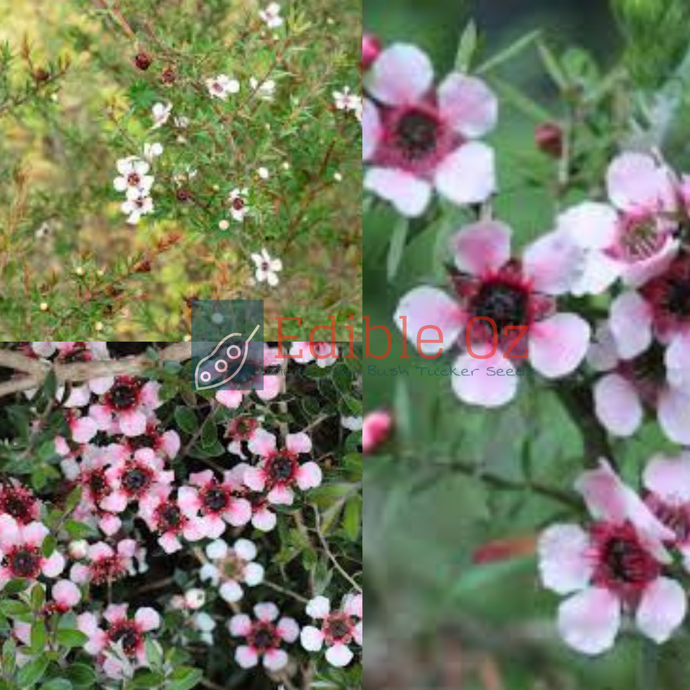
Manuka Myrtle - Leptospermum scoparium (Broom tea tree) seeds
Regular price
$3.95
Sale
or make 4 interest-free payments of
$0.98 fortnightly with
 More info
More info
Leptospermum scoparium
Common Names: Manuka, Manuka Myrtle, New Zealand Tea Tree, Broom Tea Tree, Tea Tree, Leptospermum
Quick Facts
- Height: 2–5 meters as a shrub; up to 15 meters as a tree
- Foliage: Evergreen, dense branching, small spiny leaves (7–20 mm long, 2–6 mm broad)
- Flowers: White, tinged with pink or rarely red, 1 cm in diameter; blooms in spring and early summer
- Climate: Native to New Zealand and South East Australia; frost-hardy (-7°C in normal rainfall)
- Soil: Adapts to various soils; tolerates heavy shade
- Uses: Hedge, screen, or ornamental
Why Grow Leptospermum scoparium?
Leptospermum scoparium is a hardy and versatile plant ideal for various landscaping purposes. Its dense, evergreen foliage makes it perfect for hedges or screens, while its delicate flowers add aesthetic appeal. It is also one of the first species to regenerate on cleared land, making it valuable for ecological restoration.
Bush Food Note
- Tea Substitute: Fresh, pungent leaves can be brewed as a fragrant and refreshing tea.
- Sawdust: Imparts a delicious flavor when used for smoking meats and fish.
- Honey Production: Cultivated for its role in producing manuka honey, renowned for its unique taste and health benefits.
Bush Medicine
- Therapeutic Properties: Anti-inflammatory, antimicrobial, and promotes expectoration of catarrh from the respiratory tract.
-
Traditional Uses:
- Leaves boiled for steam inhalation to treat colds.
- Bark rubbed on skin for skin conditions.
- Oil made from leaves used as an antiseptic.
- Modern Applications: Common in the pharmaceutical industry for its antimicrobial properties.
Disclaimer: Information about traditional bush medicine is provided for educational purposes only. Always consult a healthcare professional before use
How to Grow
-
Sowing Instructions:
- Germination occurs within 2–5 weeks.
- Smoke treatment may enhance germination rates.
-
Timing:
- Best sown in spring or autumn in temperate climates.
- Avoid the coldest and hottest months.
-
Temperature:
- Optimum germination temperature is 18–22°C.
Uses in Your Garden
- Hedge or Screen: Provides dense coverage, ideal for privacy or windbreaks.
- Ornamental: Beautiful flowers and evergreen foliage enhance garden aesthetics.
- Erosion Control: Its ability to regenerate on cleared land makes it an excellent choice for stabilizing soil.
Germination Tips
- Preparation: Smoke treatment may improve germination success.
- Care: Sow seeds on the surface of a well-drained seed-raising mix.
- Position: Place in a sunny or lightly shaded area.
- Maintenance: Keep soil moist but not waterlogged.
Order Now
Transform your garden with the beauty and utility of Leptospermum scoparium. Its fragrant leaves, delicate flowers, and therapeutic qualities make it a valuable addition to any landscape. Add this versatile plant to your collection today!
